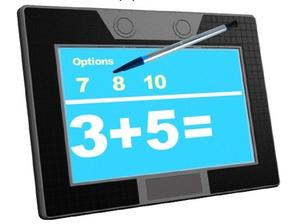$35 tablet runs on three watts of power
Developers are now ready to ramp up production on an ultra-low power $35 tablet device after a year of testing in a remote Indian village

The $35 i-Slate tablet // Source: eeepc.net
Developers are now ready to ramp up production on an ultra-low power $35 tablet device after a year of testing in a remote Indian village.
The I-Slate is powered by an ultra-efficient probabilistic CMOS (complementary metal-oxide semiconductor) processor that allows the device to achieve extra-long battery life.
The probabilistic CMOS maximizes battery life by sacrificing a small amount of precision. The chip uses an ordinary microchip, but runs it less stringently resulting in tiny errors in graphics and sound processing. Since human vision and hearing are not perfect, the sacrifices in precision are undetectable.
With the gains in power usage, the tablet requires just three watts of power, which can be supplied entirely by small solar cells like those on a pocket calculator.
The device is similar to an iPad with a seven-inch liquid-crystal touch screen display, but unlike the iPad it does not contain an operating system.
Krishna Palem, a professor at Rice University and the director of the Institute for Sustainable Nanoelectronics who created the device, said the I-Slate is most suitable for under-privileged children in remote areas for educational purposes.
“It’s an elaborate, single-function device,” Palem explained. Children can read preloaded textbooks on the tablet, take notes, or work out math problems with a stylus on a “scratch pad” to one side of the screen. The device can also store a few pages of notes.
Palem is working in conjunction with Villages for Development and Learning Foundation, an Indian nonprofit, as well as Seso, a Los Angeles based design firm.
Last year, Palem tested a prototype of the I-Slate at a school in Mohd Hussainpalli, a village about seventy miles southwest of Hyderabad, India. The prototypes were loaded with a math textbook along with exercises.
Mohd Hussainpalli is a remote region where electricity is unreliable and some villages do not have teachers.
The field tests showed that students’ math skills improved with the device.
The math program is based on a standard textbook in the region and students can move at their own pace. When completed, teachers can download information from each of the student’s devices to monitor their progress.
Marc Mertens, the CEO of Seso, said the challenge with the device has been determining “what is the ideal way to work with students, while making sure the device does as little as it can.”
Using this approach, Mertens has been able to keep hardware costs and power consumption low.
